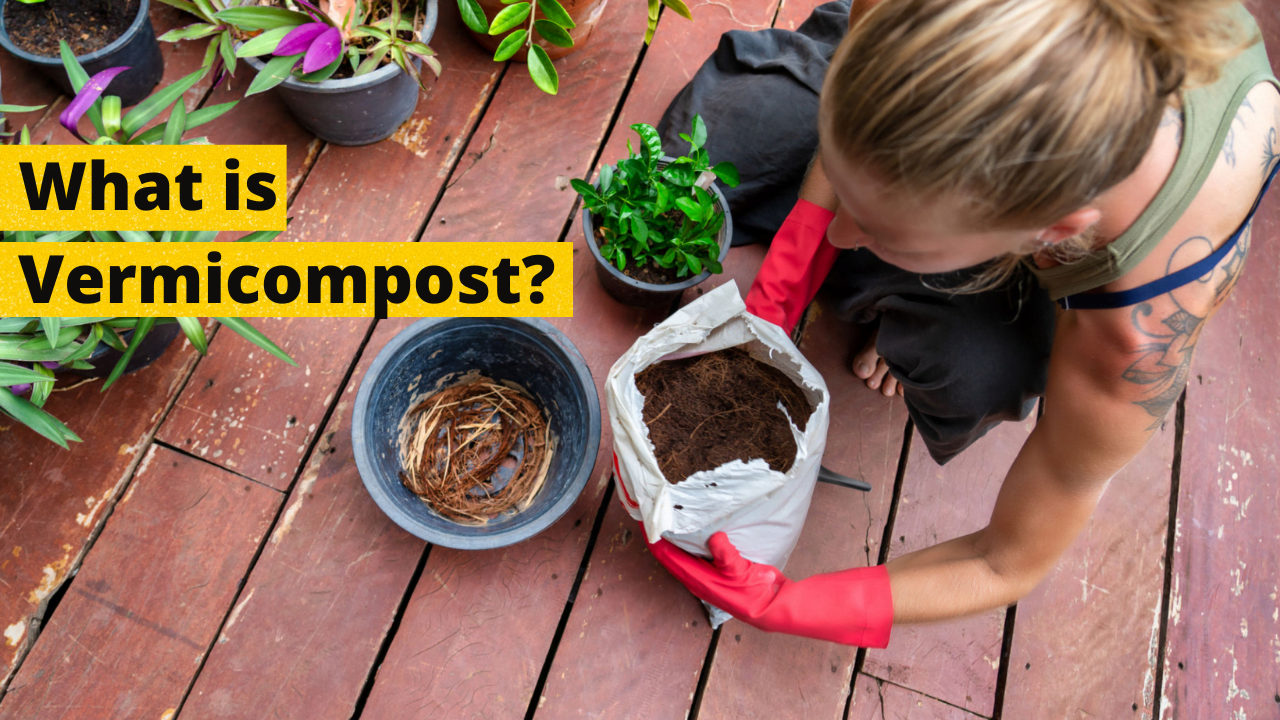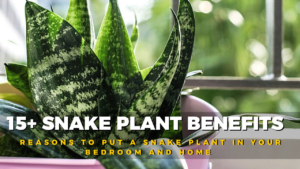Who would have thought worms could be a beautiful partner for our gardening? Vermicompost nutrient content is very high, and it helps to thrive plants. Vermicompost preparation is easy, and there are many benefits of vermicompost.
This article will cover vermicomposting, uses, benefits, drawbacks, preparation, and FAQs.
What is vermicomposting?
Vermicomposting is a scientific method of composting that involves the use of earthworms. They are typically found in soil, where they feed on biomass and excrete it in digested form.
The organic waste materials are fed to earthworms, who then pass it through their digestive tract and produce vermicompost fertilizer in the form of granules (cocoons).
Although it is garbage for the worms, it is a gold mine for gardeners. Traditional compost is deficient in nitrogen, phosphorus, and potassium in critical plant nutrients. Vermicompost fertilizer, on the other hand, is rich in these elements. Compost also contains bacteria that aid in the growth of plants.
Vermicompost uses are a quick and effective way to turn kitchen trash into a nutritious soil supplement. The term “vermiculture” refers to the practice of raising worms. These are used as fertilizers to improve the quality of the soil.
General properties of vermicompost:
As soon as gardeners realized the significance of organic input for their houseplants, vermicompost usage among them increased rapidly. The dung of earthworms is considered the primary product, that is, vermicompost contains numerous properties. These are:
Physical properties:
A good quality vermicompost is always non-toxic, easy to decompose, and environment-friendly. Different kinds of organic waste, including municipal garbage, farming remains, sewage sludge, industrial waste, and even human feces, can be employed for vermicomposting. Earthworms play a crucial part in transforming these materials into nutrient-rich compost. The result of vermicomposting would include of fine particulate form, a granular structure. Vermicompost plays the part of a “soil conditioner” by enhancing the soil porosity, drainage, and water-holding ability.
Chemical properties:
Vermicompost is enriched in nearly all vital macro and micro plant nutrients. Compared to all the secondary nutrients, the calcium range in vermicompost is way higher than in other composts. In contrast with typical farm yard compost, vermicompost has worm slime which enables controlling the washing away of nutrients currently present in there. The rate of reduction of heavy metal depends on vermicomposting processes. This effect creates vermicompost with fewer impurities than any other compost. Thus, it makes them more environmentally sustainable. There are specific differences seen in chemical properties between normal farm yard compost and vermicompost.
| Property | Compost | Vermicompost |
| pH | 7.16 | 7.72 |
| OC | 20.5 | 17.3 |
| N | 2.42 | 3.5 |
| P | 0.88 | 0.71 |
| K | 653.5 | 950.5 |
| Ca | 2.9 | 3.5 |
| Mg | 1.5 | 2.8 |
Biological properties:
The by-product of ground casting is a habitant of different microorganisms, viz. bacteria, fungi, and actinomycetes. These micro-organisms remove various enzymes and phytohormones which supports in enhancing plant development. Therefore, vermicompost enables both microbial and enzymatic movement.
The waste of earthworms is mainly known to host visible inhabitants of nitrogen-fixing bacteria and further associative bacteria. These healthy microorganisms play a vital part in the soil ecosystem. Earthworm forms, and the manure created by them, deliver fair conditions for the increase of vesicular-arbuscular mycorrhiza (VAM) propagules.
These VAM propagules have exceptional longevity, staying for up to 11 months on the earthworm cast. Their existence contributes immensely to the enhancement of microbial movement in the soil. This microbial activity, in turn, reduces the production of nitrogen and phosphorus in readily available forms for plants.
Why vermicomposting?
Vermicompost fertilizer results from earthworm digestion and aerobic breakdown at room temperature employing micro-and macroorganisms. Vermicomposting, or worm composting, makes a rich organic soil amendment rich in plant nutrients and helpful bacteria.
Plants benefit greatly from vermicompost.
Vermicompost increases the number of nutrients available to plants, allowing seeds to germinate faster, grow faster, build healthier root systems, and yield more. More flowers or fresh fruits and vegetables are the results.
- It also aids in the suppression of plant diseases and insect pests, ensuring that the quantity of blooms does not go to waste.
- The vermicompost nutrient content improves the soil structure’ supply to the soil and increases the soil’s capacity to store nutrients in a plant-available form.
- It boosts the soil’s ability to keep nutrients in a plant-available form, and the aeration and internal drainage of thick clay soils are improved.
- Vermicompost uses are to enhance the ability of sandy soils to hold water and provide a diverse range of helpful bacteria.
- Vermicompost fertilizer is frequently used as a top or side dressing for most demanding and worthy plants as it is typically manufactured in small quantities. Vermicompost preparation improves garden soil when mixed with normal compost.
Before jumping on to the question “how to make vermicompost,” let us brief you on which worms are appropriate for vermicompost preparation.
Can I use any type of earthworm?
“A worm is a worm” can sum up your feelings on the matter, yet not all worms are alike. Avoid using your garden-variety nightcrawlers. They don’t consume organic trash and must burrow their path through dirt to feed and live. The majority of the smaller worms living in your garden are unsuitable for vermicompost preparation.
Red wigglers (Eisenia fetida) and redworms are the best worms for vermicomposting (Lumbricus rubellus). They prefer a compost environment to plain soil, and these two species make excellent compost worms. They are also very easy to keep. Worms that eat vegetable waste, compost, and organic bedding create more nutrient-dense casts than those that eat ordinary soil.
Red wigglers are challenging to find in garden soil. Redworms are usually among compost, decomposing wood, and other organic materials. The issue is figuring out who they are. It’s better to buy Lumbricus rubellus because you won’t be able to identify the difference between it and other worms.
We will guide you step by step on how to make vermicompost at home. It is pretty easy if you follow the steps correctly.
How to make vermicompost at home
Step 1: Choose a location for the vermicompost preparation in your home.
The ideal worm bin location is a steady temperature with a high moisture level. As a result, you must keep your vermicompost preparation away from an oven, heater, air conditioner, or vent. Even though worm bins don’t emit much odor, keep them away from your home’s living areas. The worm bin should be kept in a laundry room, closet, or other big storage areas. Those who have a spacious kitchen can place the bin there so that you can readily throw the food.
Step 2: Purchase a worm bin.
Worm bins are vermicomposting containers that have already been assembled. You can find a worm bin for vermicompost preparation in various gardening stores and online supply stores. If you don’t prefer to purchase a worm bin, a large storage container will do the same. Make sure your vermicompost preparation container is completely opaque to keep light out.
Step 3: Drill holes for air passage in the container.
You can find air holes in a pre-made worm bin if you buy it from a store or online. It would be best if you used a power drill to cut 12-inch holes in the bin’s bottom, sides, and lid. In the bin, drill about 20 holes for vermicompost fertilizer.
Step 4: Place the bin on blocks and cover it with plastic.
Get two bricks, two pieces of wood, or something else to keep the bin off the floor. Now, put a large piece of plastic in the house area to place the worm bin. It would be best to place the blocks/woods on top of the plastic and the bin on the bricks for vermicompost preparation.
Step 5: Purchase worms from a garden store or online.
The most crucial step is to purchase worms. You can purchase it at a local garden store or order it online for vermicompost nutrient content.
Step 6: For bedding, cut newspaper or corrugated cardboard into strips.
To provide a habitable environment for your worms, you should prepare bedding to fill one-third to one-half of your bin.
Note: Ensure it’s clean and non-toxic because the worms will eat both the bedding and the table scraps you feed them for vermicompost preparation. Shred a lot of newspaper or cardboard to fill an 8-inch-high bin of vermicompost fertilizer.
Step 7: Soak your bedding in water.
Earthworms require moisture to survive as well as to breathe in vermicompost fertilizer. Make your bedding humid enough before adding the worms to it. Sprinkle a small amount of water or pour it on the mattress. Check to see if all of your vermicompost bedding is damp. Remember that they enjoy the water; therefore, their bedding should include about 75% water for vermicompost nutrient content.
Step 8: Put the bedding into the vermicompost bin.
When your bedding is completely soaked, spread it evenly on the vermicompost bin’s base. It will create room for worms to settle in. Your bedding should fill at least the bottom 8 inches of the vermicompost bin.
Step 9: On top of the bedding, pour some dirt.
We create a space for worms, and they prefer to dwell on the soil. Putting some dirt in your vermicompost fertilizer bin will make them comfortable enough. Take some debris-free soil or purchase potting soil online or from the garden store. Make sure you evenly distribute it across the bedding.
Step 10: Cover the soil with a uniform layer of food waste.
Distribute the food scraps across the soil. You can use leaves, vegetable peels, coffee grounds, cores, and seeds from fruits or vegetables, as these are the greatest food leftovers. Crushed eggshells, and tea bags, are also ideal picks for vermicompost nutrient content.
Step 11: Replace the lid and wait two weeks.
Close the bin’s lip properly for at least 5 to 10 days for vermicompost preparation.
Step 12: Place the worms in the bedding
Make a hole in the bedding center by opening the vermicompost bin’s cover. Instead of putting the worms across the top layer of the vermicompost, slowly pass them into this hole. It will make the worms feel more at ease.
Note: For every 100 worms, add around 22.5g of food per day.
If your house produces more garbage for the vermicompost preparation, you can increase the number of worms in the bin.
Step 13: After around six months, harvest the vermicompost.
Every week, inspect the container to see how much bedding is left. You’ll know it’s harvest time when all of the bedding has been transformed into compost. Replace the wet bedding. Slowly dig out the vermicompost fertilizer, but keep the worms in the bin.
How to harvest the compost
The “dump and sort” approach is a simple way to harvest castings and separate worms from castings.
- Separate the undigested material from the final material and lay the finished material in various little cone-like forms on a tarp in a well-lit area.
- The worms will eventually flee the light and travel to the cone’s center.
- Scrape worm-free castings away from the top and sides of the cones until worms can be seen again.
- The worms will eventually migrate to the bottom middle of the cone, leaving you with a small clump of worms.· Replace the worms in the bin and resume feeding.
How to use Vermicompost?
Rather than distributing vermicompost fertilizer aver your garden and flower beds as you do with compost, save it for plants. Make sure to save your vermicompost for plants that are in desperate need of nutrients at the time.
1) As a Booster for the Seedlings
Vermicompost preparation is an excellent supplement for starting seeds since it is nutrient-rich and aids in the growth of young plants. Add a small amount of vermicompost nutrient content to the seed-starting medium if you’re planting them indoors. You should sprinkle it down the trench or into the seed holes you drilled if you are planting outdoors.
2) As a top dressing
While the plants are actively growing, you should add soil amendments with the high nutritional content of vermicompost fertilizer. It’s not like you shouldn’t put it in the garden bed whenever you like. Do it when it makes sense for the green family (plants). Vegetable and ornamental plants can take advantage of vermicompost fertilizer’s outstanding water-holding properties in the spring, summer, and fall.
Apply your vermicompost fertilizer to the drip line of any plant to use it as a top dressing. It will drip down to the roots and let your plant flourish happily. Spraying water onto the branches from the top is necessary. The small roots will absorb a lot of water and nutrients.
3) Houseplants and Vermicompost
Houseplants make excellent vermicompost recipients since they may be amended all year. Remove a tiny amount of potting soil and replace it with vermicompost in the plant’s pot. To replace the soil you removed, sprinkle 1/4 to 1/2 inch into the container. If you give your houseplants vermicompost preparation every other month, they’ll be happy (which they didn’t).
Some common problems of vermicomposting
The first step is to determine whether you’re dealing with fruit flies or gnats. Or you could do both. Fruit flies and mosquitoes are both little flying insects. However, the fruit flies are rounder and whiter. Gnats are small, black, and thin. The telltale distinction is often behavioral: gnats dislike flying and try to flee rather than take to the air.
Fruit flies:
Food that has been completely buried should not attract flies. Many flies on your vermicompost preparation suggest that food is exposed or decaying, which could signal that there is too much of it.
What to do?
Fruit flies are attracted to citrus fruits in particular. Clean out some of what’s there, then feed the worms again after a few days or a week. Give them less and bury it deep when you do. You can bring the fruit fly population under control due to this.
Gnats:
Unlike fruit flies, which hover around the fruit, fungus gnats prefer light (like your computer screen) and humid environments (your nose). They can also cause damage to plants, unlike fruit flies. Even if you don’t mind a few in your vermicompost preparation bin, removing them from the completed compost before utilizing them is critical. It entails injecting helpful nematodes into the batch.
After tackling the problems of vermicompost fertilizers, let us move forward. We will break down the drawbacks and benefits of vermicompost.
Drawbacks of Vermicompost
The following are the major drawbacks of vermicomposting:
- Converting biological matter into useful forms is a time-consuming process that can take six months.
- Vermicompost preparation may have an unpleasant odor.
- It requires a lot of attention. You have to add that the feed must be regular and give care not to overwhelm the worms with food.
- It’s important that the bin isn’t too dry or too damp. You have to check the moisture level of vermicompost fertilizer on a regular basis.5. Pests and pathogens such as fruit flies, centipedes, and flies thrive in vermicompost preparation.
Benefits of Vermicompost
The following are the main advantages of vermicomposting:
- Vermicompost fertilizer helps to develop plant roots.
- It improves the soil’s physical structure.
- Vermicomposting improves the soil’s fertility and water resistance.
- Vermicompost preparation aids in germination, plant growth, and crop output.
- Vermicompost nutrient content aids in the growth of plants and flowers.
We will cover the most asked questions about vermicompost fertilizer.
Frequently Asked Questions
Ques1: Does vermicomposting require too much attention?
A worm bin, in general, takes very little upkeep. Worms are surprisingly low-maintenance living companions. Your little friends’ earthworms don’t need to be fed every day, don’t make a lot of noise, and only need to have their bins cleaned every three to six months.
Ques2: Can I use homemade bins for vermicompost preparation?
Yes, you can use homemade bins for vermicompost preparation. Bins constructed of wood or plastic can be made quickly and easily. Because worms dislike light, the material must be opaque. It’s not required to use a tight-fitting lid because worms rarely try to escape their confines. Tightly fitting lids cut off ventilation. However, some cover is required to keep light out and moisture in the vermicompost fertilizer.
Ques3: Which size of bin is ideal for vermicompost nutrient content?
The size of the bin is determined by the number of worms you intend to keep and the amount of rubbish you want them to recycle for vermicompost nutrient content.
Worms prefer to live on the ground rather than in the air, for starters. (Tall commercial bins are usually made up of several shallow trays stacked on top of one another.) The depth of a one-room bin should be no more than 12-18 inches (30-45cm). It’s critical to have adequate ventilation and drainage for vermicompost preparation.
Ques4: What is the ideal location for vermicompost fertilizer?
Because worms are light and noise sensitive, a corner of the basement is frequently the best place for them to live. Earthworms thrive in temperatures ranging from 55 to 77 degrees Fahrenheit (13 to 25 degrees Celsius). Therefore most basements should be suitable for vermicompost fertilizer. Worm bins can be kept outside (at least in some areas) as long as they’re in the shade. People have discovered ways to keep worm bins in their kitchens, garage, and even living rooms. You can also put bins inside for the winter months in colder climates.
Ques5: What can I feed to worms for vermicompost preparation?
If you provide your worms with the correct waste, you can easily avoid difficulties.
Fruit scraps, vegetable peels, tea bags, and coffee grounds can all be used in this recipe (unbleached coffee filters can also go in).
Meat and its products, as well as dairy and oil-based foods, should be avoided. Those trimmings will only attract pests like flies and rodents and hurt your worms.
Inorganic garbage, such as aluminum foil or glass, should not be fed to your worms.
Also, stay away from colored-ink newspapers because their dyes can be dangerous. You’ll end up with happy worms and plenty of compost if you employ common sense.
Ques6: How often should I feed my worms for vermicompost preparation?
If you’ve provided food to your worms once, it’s better only to feed them once a week or twice in little amounts. The goal is only to feed worms enough to consume; otherwise, the portions of food left (what they don’t metabolize) will stink up your compost bin.
If your worms aren’t eating quickly enough, you can either add more worms or chop up the food you’re feeding them. Chopping trash up will speed up the composting process of vermicompost fertilizer, much like rotating the compost in a regular compost heap (without the worms).
Ques7: Will vermicompost fertilizer create any odor?
A foul odor might develop in a vermicompost preparation bin at times. It’s crucial to understand that this isn’t the scent of compost or worms; it’s the stench of rotten food. It usually occurs when the worms are fed more than they can chew.
However, the meal may be not buried deeply enough. Either bury the food and cease feeding the worms until they catch up, or remove the bad food, wait a few days, and start over on a smaller scale.
If the stink persists, make sure the holes around the bin’s bottom are clear. If the bin has drainage holes, make sure it’s on blocks to allow air to circulate beneath it.
Ques8: What if worms are on the loose?
Worms attempting to flee the bin indicate that something is awry in your vermicompost fertilizer.
One of two things is frequently the case:
either the castings have piled up too deeply,
or the bedding is overly acidic. If the problem is casts, the obvious solution is to harvest. Suppose you don’t have time to change the entire bin of vermicompost preparation, rip up some additional newspaper or other bedding material, and chuck it in. It may keep the worms occupied until you can collect the castings and set up new bedding.
If it doesn’t seem to be the issue, try reducing acidity in the bedding by adding crushed eggshells. Too much peat moss or coconut coir (particularly peat moss) in the bedding and too much citrus fruit or peels in the diet can make bedding acidic. Cut out all citrus fruits and add more shredded newspaper or cardboard to the beddin
Ques10: Can I use earthworms that are found in my garden for vermicompost preparation?
Vermicomposting cannot be done with ordinary earthworms found in your garden. These are worms that live in the soil and do not process significant amounts of food waste or reproduce successfully in small spaces. On the other hand, worms known as redworms or red wigglers are chosen for vermicompost nutrient content because they reproduce quickly, are communal, and feed on the surface.
Ques11: What are the raw materials of vermicomposting?
Decomposable organic manure such as animal waste, kitchen waste, farm yard remains, and forest waste are typically utilized as composting materials. In general, animal waste especially cow dung and dried diced crop remains are the fundamental basic materials.
Conclusion
Due to a lack of yard space, time, or energy, or because people live in a rental unit, backyard composting may not be an option for many who want to divert their materials from the landfill; consequently, vermicompost fertilizer becomes an appealing alternative.
Many of you have gotten into the fun of vermicompost preparation and now have a bin full of rich and beautiful vermicompost (garden gold) or worm castings. It’s easy to turn table scraps into useful vermicompost with the correct worm and guide.
The benefits of vermicompost are many, and people like to use it more frequently in their gardens.
Would you prefer vermicomposting or not? Write your thoughts on vermicompost fertilizer in the comments section!
Related Articles
- 15 Best Indoor Bonsai Trees for Beginners
- 15 Snake Plant Benefits | Reasons To Put A Snake Plant In Your Bedroom and Home
- 15 Stunning Flowering Bonsai Trees
- 20+ Best Indoor Plants for Bedroom that Help you to Give the Best Sleep Ever
- 20+ Best Indoor Plants for Kitchen
- 20+ Best Low-Maintenance Indoor Plants







